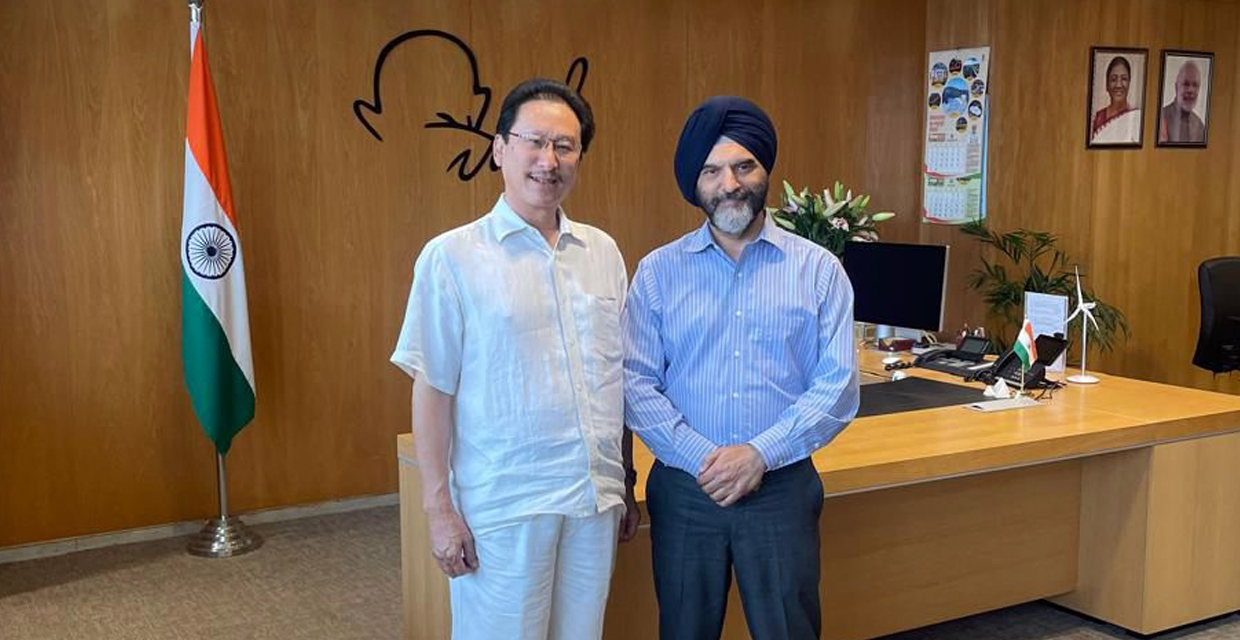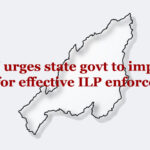The Minister for Power and Parliamentary Affairs of Nagaland, KG Kenye, is currently in Delhi to address the state’s ongoing power shortages. Acknowledging the urgent energy demands in Nagaland, he is engaged in active discussions with senior officials from the Ministry of Power, Government of India, to seek central intervention and support.

Kenye’s discussions have highlighted the immense potential of Nagaland’s largely untapped hydroelectric resources, which have remained underutilized due to significant infrastructural and logistical challenges. He is advocating for power development projects under the scheme “Budgetary Support for the Cost of Enabling Infrastructure for Hydro Electric Projects (HEP),” a Central Government initiative aimed at accelerating the development of hydroelectric power, especially in remote and hilly regions like Nagaland.
The scheme provides financial assistance for developing essential infrastructure, including roads, bridges, transmission lines, and communication networks—critical prerequisites for any hydroelectric power project. In September 2024, the Union Cabinet approved a proposal to modify and enhance this scheme, allocating Rs 12,461 crore for the nation, with Rs 4,136 crore earmarked specifically for the Northeastern States. This funding is set to be implemented from FY 2024-25 through FY 2031-32.
The revised scheme aims to address the unique challenges faced by remote areas like Nagaland, providing support not only for physical infrastructure but also for the technical framework required to integrate power generation into the national grid. Nagaland’s energy vision extends beyond merely alleviating power shortages; it seeks long-term sustainable energy development. A key element of this strategy involves leveraging Central Financial Assistance (CFA) to facilitate the state’s equity participation in joint ventures with Central Public Sector Undertakings (CPSUs). This collaborative model is expected to enable the development of large-scale hydroelectric projects, unlocking Nagaland’s full energy potential.
Additionally, the scheme encourages private sector involvement and includes provisions for pumped storage projects (PSPs), which will help stabilize the grid and enhance the integration of renewable energy sources. These modifications have the potential to position Nagaland’s hydroelectric sector as a significant driver of socio-economic growth in the state.
Beyond his engagements with the Ministry of Power, Kenye has also met with the Ministry of New and Renewable Energy (MNRE) to explore the feasibility of Small Hydro Power (SHP) projects in the Northeastern Region. The geographic landscape of Nagaland, characterized by numerous small rivers and streams, makes it ideally suited for SHP projects. While larger states can rely on massive rivers for extensive hydroelectric dams, the Northeastern states stand to benefit from SHP projects that are more compatible with their smaller water bodies.
Although the MNRE has a program dedicated to SHP development under its renewable energy initiatives, this program has been stalled in the Northeastern Region for over a decade. Kenye has urged the Ministry to revive and expedite these long-pending SHP projects. During discussions with the MNRE Secretary, he emphasized the need for enhanced central support to scale these smaller projects across the Northeastern states. By focusing on SHP, Nagaland aims to harness clean energy from its rivers, create localized employment opportunities, and ensure that off-grid communities benefit from the generated electricity, thereby contributing to rural development in the region.



